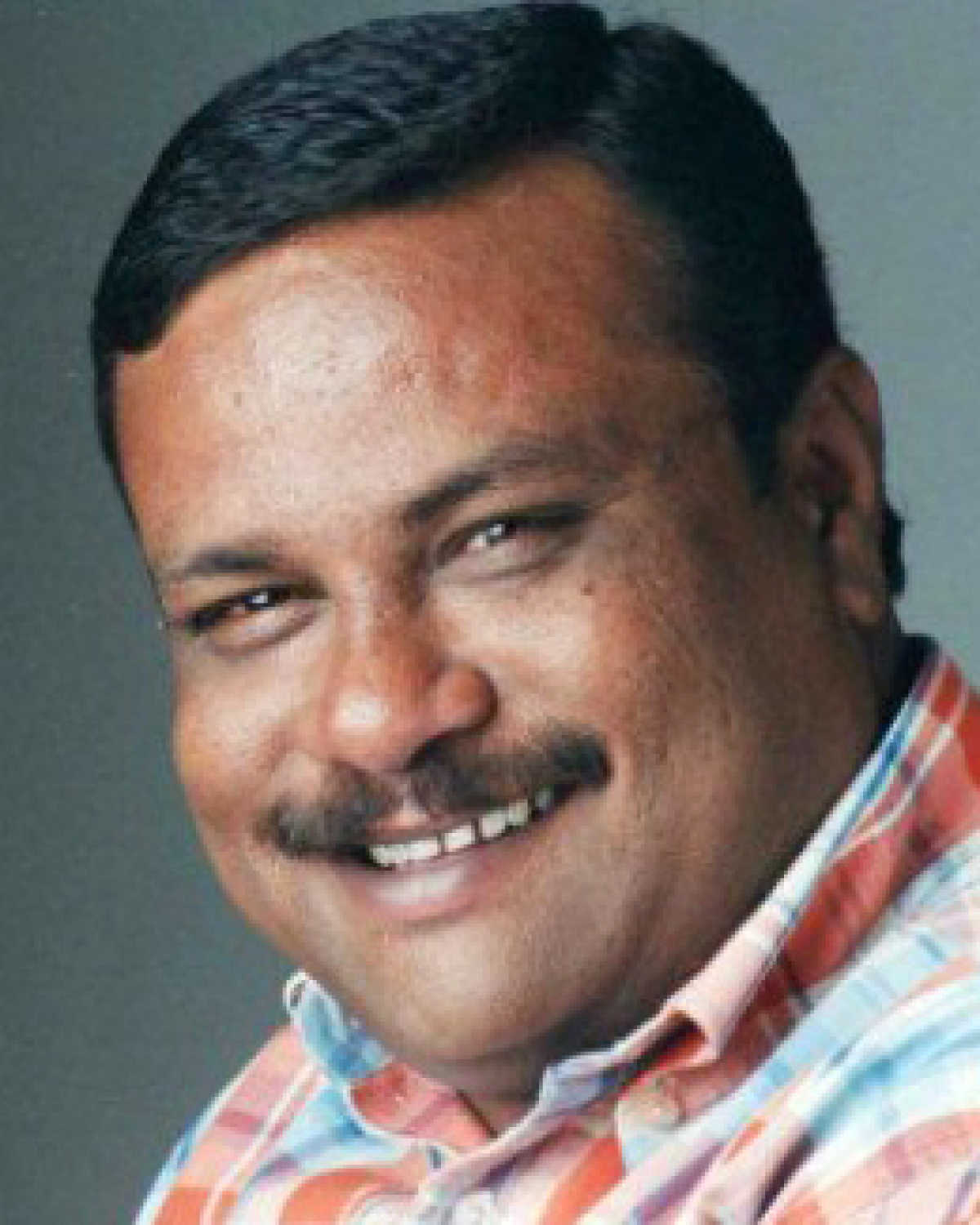
In conversation: Ilavarasu Cinematographer
Jul 23 2020
Ilavarasu is one of the most popular film personalities in South India who want to become a writer then travelled to be a cinematographer won Tamil Nadu Government best cinematographer award for his Tamil feature film ‘Manam Virubuthae Unnai’, then came a turning point Ilavarasu concentrated in his acting career now he is one of the best performers who played almost important day to life characters, his acting is considered to be very realistic.
In conversation Ilavarasu shares his filmic journey with SICA.
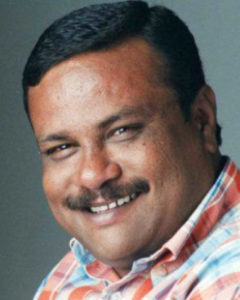
Tell us about yourself.How did your journey as a cinematographer started ?
I really didn’t have any intention or decided plan for my journey and I think it all happened like a flow. I wanted to become a writer one time and I was greatly influenced by Russian literature. With its influence I used to observe the things happening around me. I will notice the different types of people and their behaviors. When I told about the unique characters I saw to my fellow friends, they appreciated my vision and often said, I have an eye for cinema. Those instances kindled my interest and made me come to Chennai to pursue cinema. So, I approached my maternal uncle Mr. K.C.Murugesan who was working as a collage painter in Chennai and through his friend Balaraman I joined stills Ravi. My first role was darkroom assistant, then I started and learned to work colour enlarger working on ‘skintones’, width films, filters and etc., Those were the days I learned a lot about photography and I think this was my first step to move to a cinema career.
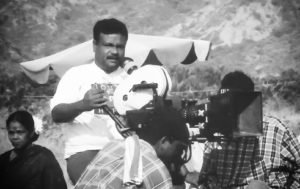
We heard you have assisted Legendary Cinematographer B. Kannan in many of his films and heard that you have a strong bond with his long term collaborator Director Bharathiraja. Tell us your experience with them both.
Yes. after working with Stills Ravi again Mr. Balaraman helped me to reach B. Kannan. I have assisted him in many films and in his film “Nadodi thendral”, I got the first opportunity to operate the camera. Later, B. Kannan sir gave me the opportunity to wield the camera for the few scenes in Karuthamma and ‘Priyanka’. It was a wonderful experience working with him and he has given valuable insights all through the days I worked with him. We know B.Kannan and Bharathiraja is a rare Director – Cinematographer combo that lasted for more decades. B. kannan has almost done most of Bharathiraja’s Movies. We had so many interesting experiences working with this duo.
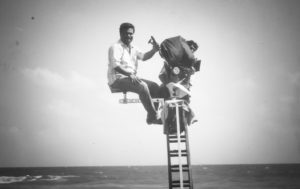
To say a few- Bharathiraja doesn’t work with the written order script fully and he is a spontaneous creator. He will always go with the scene in its emotional flow and direct the actors accordingly. He always seems to run the visuals in mind before taking a shot and will do the shot divisions dynamically on spot . At times , we, the associates of B.kannan will be on the verge of confusion because of this pattern & we need to speed up according to the flow. But, B.Kannan always handles the situation very subtly and he will make work according to Bharathiraja sir’s changes. He works for the director’s vision and always insists on us every time that cinematographer must do the work by understanding the director and we should not be preoccupied with anything before the director’s final call.
Interesting. Tell us your experience in working with them both in iconic Muthal Mariyathai ?
Director Bharathiraja always goes with his intuitions and it will always be the right one at the end. When Muthal mariyathai was shown first to a popular producer, he warned Bharathiraja that the movie was going to flop at the box office. Same with the music director of the film Ilayaraja, who composed the Background score without having much hope for the film.But Bharathiraja was very confident that the film will be a trendsetter and often said Muthal mariyathi was his closest film after 16 Vayadhinile. Proving that, at last, when the movie got released it was a blockbuster and still has its cult value for its story and his making.
Could you share with us about your first film ‘Panchalankurichi’, which got much appreciation for the outdoor shots.
The story plot was happening in Pollachi and when Director seeman narrated the script we wanted to show a new side of pollachi. Because by that time pollachi was the most explored shooting spot for every film and we scouted for almost 20 days to zero in the locations. Pollachi itself was a beautiful place full of greenness and specifically we went for the shoot from August to November when the season has fresh green and pure colours and we thought, it will add special value for the film’s outdoor sequences.Also, the film doesn’t have big grandeur and we need to work on the space only through compositions. Thankfully , Pollachi itself is full of naturally elevated 3D like landscape and I have used kowa 100mm for most of the shots. For a few shots I also have used the popular HP zoom lens. I was using 200T KODAK film stock for the film and even that was my favourite film stock at that time. Coupled with Polarizer & ND i have rated the film stock as 50 ASA and worked for the film.
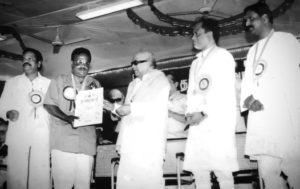
Coming to your film ‘Manam Virumbuthe Unnai’, the film which got you Best cinematographer award from Tamil nadu Government. Tell us your experience working on that film.
Manam Virumbuthe unnai is a very close film to my heart and of course it was one of my best works in my cinematography career. I should really thank Director Sivachandran for it because he gave me full liberty and gave me the right space for the cinematographer. Every shot was very carefully structured, we even concentrated the elements on the wall to achieve good composition. The whole film was happening in Ooty and we have shot in many exotic locations. I have used 800 ASA film rated as 100 ASA for the most of the film and have added a tinge of warm tone for the interiors, during the time of grading. The most challenging part in the film was to handle the exposed film. Since the film is highly sensitive we need to maintain the colder as possible and sometimes we use Icebox even though we were shooting in ooty. That way we managed to send safely to processing and thankfully it didn’t develop any fog. Though the film didn’t do well at the box office, the hard work paid for me & I have got the best Cinematographer for the film from Tamil nadu Government.
Tell us your approach in lighting for Outdoor Cinematography.
During the days when I was working with B.Kannan sir, we would do the lighting based on the available light and it would be the main source of light. But, I have a great admiration and love for backlighting in P.C.Sreeram sir’s movies.I have tried to replicate the same in some of my outdoor shots. At times I will give exposure for the background keeping the foreground silhouette. I have always wanted to experiment in lighting & for the film ‘Ninaithen Vandhai’, I did a DIY fluorescent light setup using the fluorescent bulbs in a case- fitted with side mirrors.It was more like a recent Kinoflo lighting & have used this setup for many closeups shots in the film. I even have used reflectors during the night setup for the ambient fill and I liked to use the recent PAR lights too.
Tell us about your journey as an Actor. How did your acting career started after Cinematography ?
I have already done some small roles when I was working with B.Kannan & Bharathiraja.At times, Bharathiraja used to call me to enact the dialogue for the actors and I was closely observing how bharathiraja is teaching the newcomers. Even for the film ‘Kodi Parakkuthu’, when there was a need for a police role, film’s hero Rajinikanth refered my name and it was still a refreshing memory in my life. After finishing 12-13 films as a cinematographer, for a period I didn’t get good offers to do and my last worked directors were also waiting for projects to start. There I got few offers to act and the turning point in my acting career was when I met then SICA President P.N.Sundaram.When I was confused whether to take up acting as further, he encouraged me to pursue further. I sincerely should thank Mr. Bharathiraja for the chances he gave, which helped me to get the confidence to act.
As a cinematographer turned actor, tell us how the actor- cinematographer relationship should be ?
Again when I was there with B.Kannan & Bharathiraja, I happened to see that they will first tell the actors to perform and they will only tell the corrections only at the end. I think this will give the actors enormous energy and freedom to perform & he will emote organically. Same way I think there should be a constant interaction between the actors & and the cinematographer ,when I act,I will ask the lensman about the lens, focus marking and will follow it. This makes the job of the cinematographer easy and these interactions should happen between the both and they should justify & work for the frame.
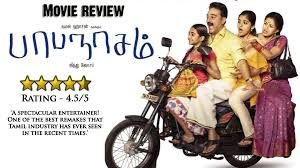
How was the experience in acting in your recent movies- Mayanadi & Papanasam which got you much appreciation.? And you have become a seasoned actor. Tell us
I really admire the thought process happening in malayalam cinema and i have a great admiration for old directors like Padmarajan, Aravindhan, Sibi malayil and etc., When i happened to work with a young generation new wave malayalam directors, one thing i appreciate is, they never instruct the actors. They will ask the actors to perform first and will only tell the corrections if necessary. Based on the script I will prepare myself with two or three reactions and when I enact the 1st one, immediately it will be okayed.There was no need for the 2nd and 3rd actions. It happened in both the films and I had the best experience in shooting with them. Moreover I used to challenge myself that I need to do better everytime in my actions, dialogue delivery, body language etc., in every film of mine. And I think this is the most important driving force of my acting career.
What are the tips or advice you want to pass it on to the upcoming Cinematographers ?
I feel the young generation filmmakers are in the right period because of digital technology. I happened to see different works on youtube though they are amaetur filmmakers. One thing I want to emphasize is that the upcoming cinematographers are – they need to have editorial knowledge and they should know where we are going to cut, & this will help them ease with shot divisions. I urge the current upcoming cinematographers to watch the classic works for good and meaningful shot divisions, particularly the works of Directors A.C.Thirulokachander & K.S.Gopalakrishnan. Once they are well versed with the shots, 90 percent of the work is done and it will ease the work of the Director.
Very true. How do you see the upcoming trend of seeing films in OTT?
I see young generations are going Digital and a lot of works are available in the net world. more and more youngsters are creating digital contents and equally lot of youngsters are there to follow. So, I see the new OTT platforms opened a new space for them all and it is more like the transition of ‘film to Digital’. But the downside is we are yet to get different contents and mostly we are fed with the same genre of filmmaking. One other important issue is, they don’t have a proper no ‘terms and conditions’ in releasing the film. Being associated with trade unions like SICA, we are looking for a solution, if some technicians or workers are not paid fully and the producer sold his film to these platforms independently. We need to find answers for these questions and we need to have specific terms & conditions with the OTT platforms before releasing the films.
Ilavarsu is currently serving as General Secretary SICA for welfare activities during challenging COVID 19 times.
Drafted by : Gowrishankar
Conversation Idea : C.J.Rajkumar/Mahesh Muthuswami
